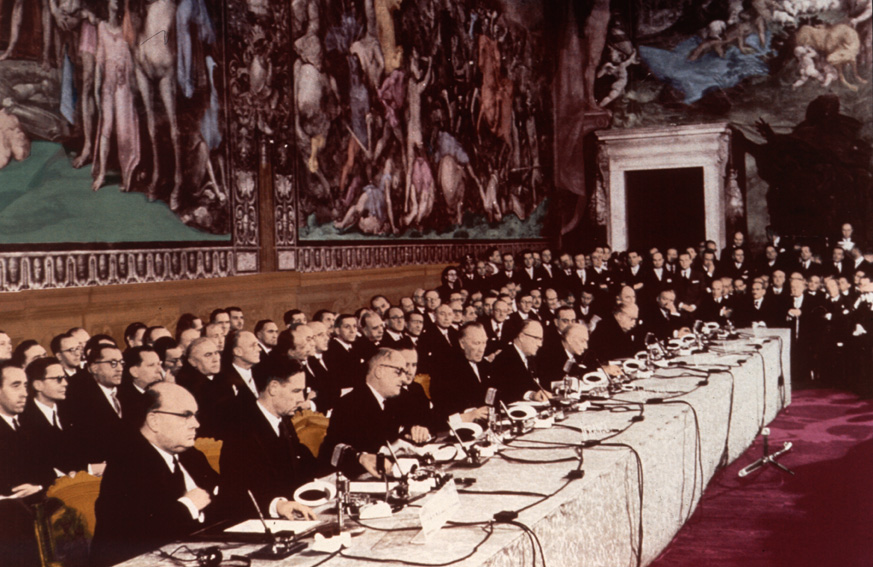EUREKA the online catalogue of the Council Libraries!

For any questions, comments, suggestions: ask a librarian
Visit our website for more information and our blog for news.
You can send your requests by e-mail or via the Eureka online catalogue.
The reading room is accessible from Monday to Friday from 12:30-15:30.
The Library is located in Justus Lipsius building (JL 02 40 GH ) near Froissart entrance
Council staff and trainees are automatically registered with the Library and can use all library services and resources. For other users, please check the complete information.
Access to subscribed resources may be restricted to Council users or to users in subscribing institutions. Many publications are available in Open Access.The Treaty of Rome, or Treaty establishing the European Economic Community, was signed on 25 March 1957 and entered into force on 1 January 1958. It set up the European Economic Community (EEC), bringing together Belgium, Germany, France, Italy, Luxembourg and the Netherlands to work together towards integration and economic growth through trade, establishing a common market based on the free movement of goods, people, services, and capital.
The goal of the EEC was to transform the conditions of trade and production on the territory of its 6 member states, but also to serve as a step towards the closer political unification of Europe. The treaty created a common market, in which the signatory countries agreed to gradually align their economic policies. It created a single economic area with free competition between companies and broadly prohibited restrictive agreements and government subsidies which could affect trade between the 6 countries. The 6 members’ overseas countries and territories were also included in these arrangements in order to promote their economic and social development. The customs union that was created abolished quotas and customs duties between its 6 signatories and established a common external tariff on imports from outside the EEC.
Joint policies were adopted among the member countries: common agricultural policy, common trade policy and transport policy. The treaty allowed the creation of other joint policies in the future, should the need arise.
The Treaty of Rome established institutions to allow member states to work both for their national interests and for a common European goal: the Council of Ministers, the Commission, the Parliamentary Assembly (later to become the European Parliament) and the Court of Justice.
The Treaty establishing the European Atomic Energy Community (Euratom) was signed together with the Treaty of Rome.

Signing ceremony. EC Audiovisual Service
This bibliography is not exhaustive; it provides a selection of resources made by the Council Library. Some titles are hyperlinked to Eureka, the resource discovery service of the Council Library, where you can find additional materials on the subject.
The contents are the sole responsibility of their authors. Resources linked from this bibliography do not necessarily represent the positions, policies, or opinions of the Council of the European Union or the European Council. Some resources link outside of the @consilium.europa.eu domain.
Reuse of the covers is prohibited, they belong to the respective copyrightholders.